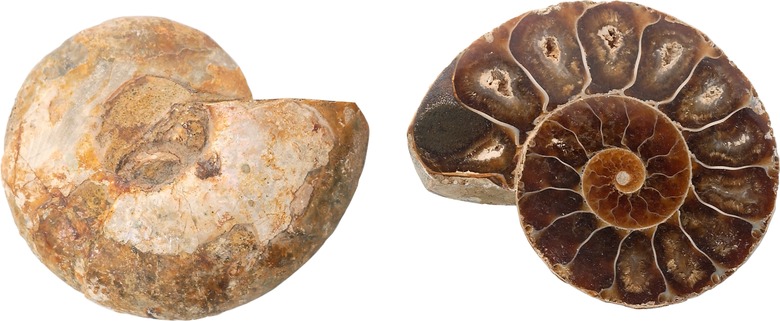What Is Fossil Correlation?
Fossil correlation is a principle that geologists use to determine the age of rock. They look at the rock surrounding fossils with unique characteristics, such as a geologically short lifespan and easily identifiable features, and use this information to estimate the age of a rock layer in other areas that contain the same type of fossil or group of fossils.
Fossils
Fossils
A fossil is defined as any recognizable evidence of preexisting life. (see Reference 1) The word "fossil" comes from the Latin "fossilis," meaning "dug up," given that they are often found in the ground. Usually only part of an organism becomes a fossil after the organism dies. This tends to consist of bones and teeth, rather than soft tissue. Marks left behind by organisms, such as footprints, are also fossils.
Fossil Correlation
Fossil Correlation
The principle of fossil correlation states that the strata containing a group of fossils that are all the same age must be of similar age to the fossils. Strata are layers of rock, and each single layer is known as a stratum. The principle works because each species has a finite life span, and these eventually become extinct and after extinction do not reappear. (see Reference 2) Fossil correlation relies on geologists knowing the ages of certain planets and animals.
Index Fossils
Index Fossils
Index fossils have specific characteristics that make them useful in fossil correlation. They must be unique and easy to identify. Index fossils must be found in a large number of areas, but only in a limited thickness of strata. To satisfy these criteria the organisms must have have existed for only a short time period, geologically, while also having lived in many different areas of Earth. Ammonites are the best-known index fossils. (see Reference 1)
Assumptions
Assumptions
When they use the principle of fossil correlation, geologists assume that extinct species do not reappear once they become extinct, and that no two species are identical. Only years after the principle of fossil correlation was first established did geologists notice these two important assumptions. However, the assumptions are now known to be valid as geologists have not found anything that contradicts them in the whole of the fossil record. (see Reference 1)
Cite This Article
MLA
Woodhouse, Emma. "What Is Fossil Correlation?" sciencing.com, https://www.sciencing.com/fossil-correlation-8750675/. 24 April 2017.
APA
Woodhouse, Emma. (2017, April 24). What Is Fossil Correlation?. sciencing.com. Retrieved from https://www.sciencing.com/fossil-correlation-8750675/
Chicago
Woodhouse, Emma. What Is Fossil Correlation? last modified August 30, 2022. https://www.sciencing.com/fossil-correlation-8750675/
